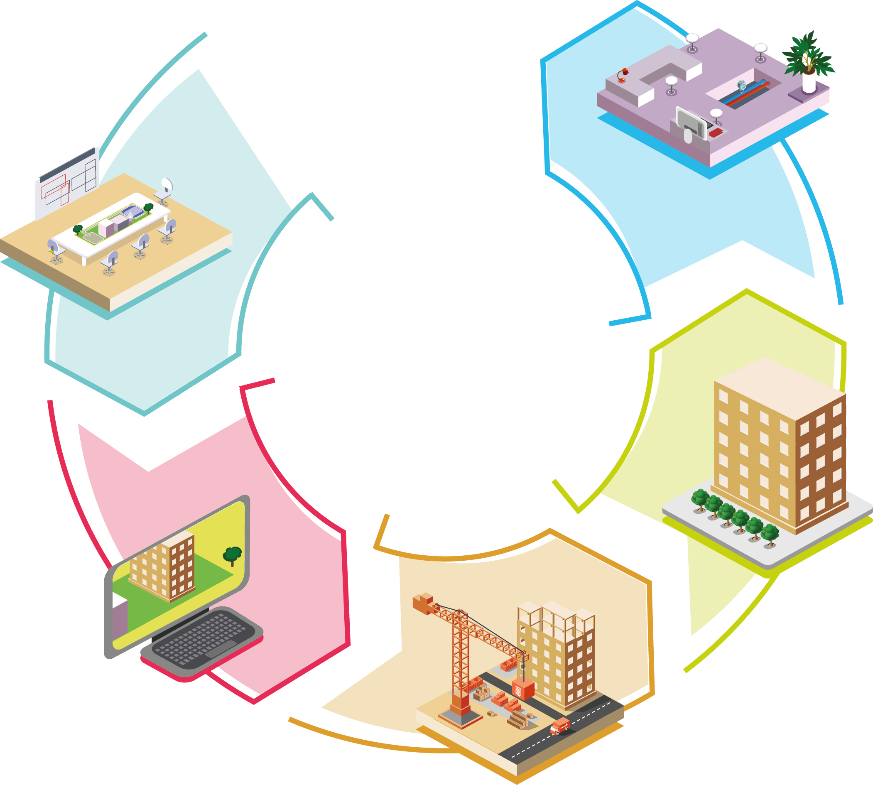Better integration of manufacturers in the value chain is essential for better project design
Though certain manufacturers have yet to be convinced, BIM is becoming THE new technology of the construction industry. It offers lots of opportunities for manufacturers by bringing them closer to other players in the value chain. Interview with Baptiste Mullie, CEO of BIM&CO.
What’s your vision for BIM, in particular for manufacturers?
At BIM&CO, we think that the future of the construction industry depends on better collaboration between all the players. To deliver better quality, more durable, buildings, to construct more quickly and maintain these buildings at low cost, the value chain should be perfectly established.
Specifically, BIM is a way of working: it enables collaborative working around a digital model. It’s the best advantage the construction sector has for improving collaboration between all players within a project.
With BIM, the manufacturer is much more involved in the realisation of the project and its operations. Being an integral part of the construction value chain as well as being closer to construction companies benefits manufacturers and they can also get better feedback on their products.
What stage of maturity has BIM reached with regards to the manufacturer?
Firstly, you should know that BIM is constantly developing. Each day, new uses are created. What’s more, there are different levels of maturity within BIM, meaning all players involved in a construction project are not at the same level.
The difficulty for manufacturers is successfully changing from a shared file system (what used to happen and still does in CAO) to a system of data exchange, with no breaks. Currently, we are still at the first level of BIM with regards to manufacturers. A poorly assisted or badly informed manufacturer will not understand the need for BIM, it’s more than modelling and sending out files.

This method of working does so much more! BIM is an incredible opportunity to create value. We’re talking about a supplier being able to track their product through several projects, collating information that could be very useful such as problems with commissioning, installing or even operating the product. What is the real shelf-life of my products? BIM generates information about the lifecycle of a building and manufacturers should be able to access this information.
What would you say about the position of manufacturers in the construction value chain today?
Firstly, I’d like to draw a parallel with another sector. In industry, this collaboration between manufacturers and their suppliers has already advanced and more streamlined, digitalised communication between these two key players exists.
For example, Michelin’s teams can optimise the design and maintenance of their production chain by standardising suppliers’ items used and having their detailed characteristics. They can test, replace, simulate and improve assemblies and machines using their perfect knowledge of the system components. This knowledge is shared with clients by manufacturers using technologies like Traceparts.com.
With BIM there is an opportunity for manufacturers to take on this role, get closer to construction companies and give them the key to designing their projects better, getting the best use of the product.
With BIM what position can manufacturers take on in the construction value chain?
In construction, the design is very complex and changes with almost every project. For any new project, the structural, mechanical, aeraulic, electrical or thermal assembly is different with each creation and as a whole, is very complex. What’s more, standards regulations and quality and comfort demands change according to the country and standard (environmental standards, quality, fire etc.) making the task-specific and complicated.
Manufacturers products or equipment are at the heart of buildings. The choice of products arises from the requirements of the project. Product specifications should then be able to be interpreted in several software programmes used by companies. At the operations phase, equipment should then be managed by the companies to optimise their shelf life.
Better integration of manufacturers in the value chain is essential for better project design. It is also essential for meeting the construction sector’s requirements for quality and durability. It’s both a challenge and a need that should be addressed, hand in hand, by companies and their suppliers.
How can manufacturers occupy the space they need to within the value chain?
Firstly, digital copies of projects, like BIM or PDS (Product Data Set – used between distributors and manufacturers) objects are necessary and constitute the first step. They allow for the standardisation of exchanges – but then they need software that can access and interpret this information. Today, for BMI objects, data is not standardised. So we must go further in providing solutions for data exchange. In this way, we can move from a dynamic exchange of files to dynamic data exchange.

What do these companies require?
The company isn’t going to use a plug-in per supplier to access their BIM objects and data… Often, companies are not satisfied with objects offered by the supplier on numerous online platforms: they are too heavy, too detailed, there are too many settings which are always different…manufacturers should integrate the processes and tools that will allow them to collaborate with companies. If for example, each company builds its own library of objects or its own data reference system, as a manufacturer I have to adapt to these methods,
That’s exactly what we had at heart when we created Onfly: by making product data exchange possible by developing the practical aspects for better collaboration between suppliers/companies, we were able to offer manufacturers a prime place within the construction value chain.
What advice would you give to a manufacturer?
To aim to be as autonomous as possible. Objects will be used by more and more professions, so you must be able to update your BIM objects without having to pass by a third party. You should be able to enrich the available data of said BIM objects easily in order to respond to the needs of your clients. Interconnecting your PIM to your BIM objects is another step to plan for in the long term.
